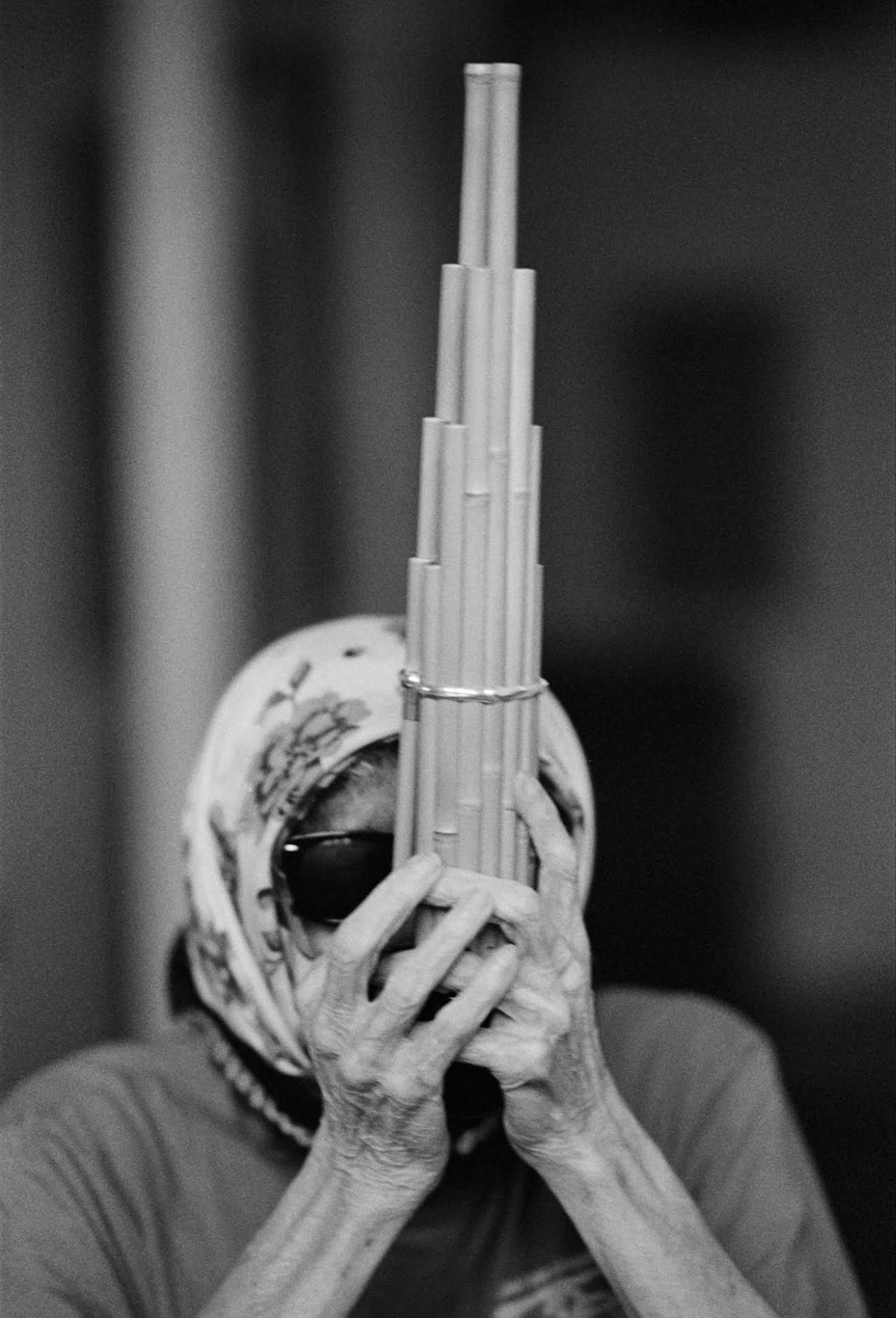Catherine Christer Hennix’s Kamigaku Ensemble

Photo: Ari Marcopoulos.
Munchmuseet
0140 Oslo
Norway
Swedish artist, composer, poet, and mathematician Catherine Christer Hennix (b. 1948) and her just intonation Kamigaku Ensemble perform a new work in which precision-tuned and continuously sustained tones on trumpet and shō—a Japanese free-reed mouth organ—harmonically coalesce in a framework of intervallic modalities constituted in part by electronically enhanced combination tones. This arrangement of the ensemble will feature Marcus Pal on electronics; Ellen Arkbro, Susana Santos Silva, and Hilary Jeffery on trumpet; and Hennix on shō.
Hennix developed the piece’s underlying principles in a body of work produced in the 1970’s with her Stockholm-based group The Deontic Miracle. She set these early compositions, inspired by Japanese court music and long-form modal jazz, in an instrumentation of renaissance oboes and sheng, the Chinese equivalent of the Japanese shō. Combining the use of sustained tones with the harmonic distortion that naturally occurs in analog sound processing systems, Hennix was able to intensify the effects of combination tone interactions produced by just intonation intervals and chords. Although similar explorations were underway in pieces such as the Theater of Eternal Music’s Pre-Tortoise Dream Music (1962), Hennix’s approach, which was inspired by her encounters with La Monte Young in New York in the late ’60s, was distinct in its transformation of the otherwise subtle effect of combination tones into the sound’s primary structuring principle. In Hennix’s characteristic style of combination tone harmony, acoustically produced tones and electronic combination tones fuse harmonically and give rise to a sound with a seemingly autonomous force. Performers navigate the subtle movements of tone through precision-controlled tuning, at once guided by and guiding the emergent process of harmonic structuring.
Hennix’s compositions for the Kamigaku Ensemble update and expand upon these investigations into the potentials of high-intensity combination tone harmony in just intonation, bringing the artist back to an earlier point of departure. In all of her sound work, Hennix focuses on the psychophysical effects of harmonic sound, effects which may ultimately restructure the dynamics of perception and prepare one for entering into the distinctionless state of being she refers to as divine equilibrium.
Catherine Christer Hennix was born in 1948 in Stockholm, Sweden. Trained in jazz drumming from a young age, Hennix was also an early member of Stockholm’s Elektronmusikstudion, where she composed computer and electronic music. She studied linguistics and philosophy at Stockholm University before deciding to focus on mathematics, a discipline in which she would continue to work for many decades.
As a sound artist, musician, and composer, Hennix was part of the minimalist New York downtown school of harmonic sound and has worked extensively with some of its key figures, including Henry Flynt and La Monte Young. Influenced by her studies with Pandit Pran Nath, a master of the Kirana tradition of classical Hindustani music, and the contemplative practices transmitted by him, Hennix has produced a large body of sound works, including sine-wave compositions, solo works for tambura and for keyboard, as well as ensemble works performed by her own groups, all of which emphasize an orientation to harmonicity as an expression of the divine.
At Stockholm’s Moderna Museet in 1976, Hennix both displayed her art—steel sculptures, sine waves, paintings, projections, and texts—in a solo exhibition titled “Topos and Adjoints” and performed her compositions as part of “Brouwer’s Lattice,” a ten-day festival of new music she organized with Swedish curator Ulf Linde. She returned to New York to teach in the mathematics and computer science department at SUNY New Paltz in 1978–79 and remained upstate for much of the next decade before relocating to Sweden and the Netherlands. During this time she continued to display her work in group shows across Europe and the United States. Hennix was given the Centenary Prize Fellow Award by the Clay Mathematics Institute for her collaboration with the Russian-American poet and mathematician Alexander Esenin-Volpin in 2000. Around 2003, she returned to composing computer music, and a few years later assumed the role of bandleader for the first time in decades, playing with Hilary Jeffery, James Fulkerson, and an early iteration of the Chora(s)san Time-Court Mirage. In 2018, the Stedelijk Museum, Amsterdam, opened “Catherine Christer Hennix: Traversée du Fantasme,” her first institutional solo exhibition, while Hong Kong’s Empty Gallery hosted “Thresholds of Perception,” a large survey of her work. Hennix’s releases with Blank Forms include an LP of her 1974 interpretation of Karlheinz Stockhausen’s Unbegrenzt (2020), the Deontic Miracle’s Selections from 100 Models of Hegikan Roku (2019), Selected Early Keyboard Works (2018), and the two-volume collection of her writings Poësy Matters and Other Matters (2018). Hennix currently resides in Istanbul, where she is pursuing studies in classical Arabic and Turkish maqam.
Marcus Pal is a musician-sound artist-composer who writes about sounds and minds in a theoretical-philosophical manner. Since 2014, they have worked regularly with Catherine Christer Hennix.
Ellen Arkbro is a composer-musician-sound artist working with intervallic harmony and installation. Arkbro composes for acoustic instruments, synthetic sounds, and combinations of the two.
Susana Santos Silva is a Portuguese trumpeter, improviser, and composer based in Stockholm, Sweden, expanding the sonic possibilities of her instrument and creatively exploring the dissolution of boundaries of perception, genre, and media.
Hilary Jeffery is a Berlin-based composer and instrumentalist who plays trumpet, trombone, tuba, piano, and electronics.
The Kamigaku Ensemble is a co-commission from Blank Forms, the Munch Museum, and Vassa Tassar, and is supported by Empty Gallery Hong Kong, the Nordic Culture Fund, and Swedish Arts Council.
The event at the Munch Museum is presented in collaboration with Ultima Oslo Contemporary Music Festival.

